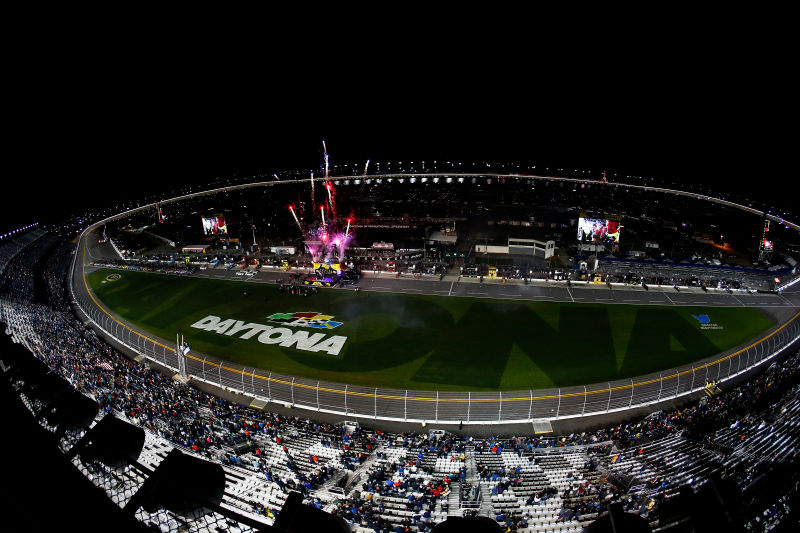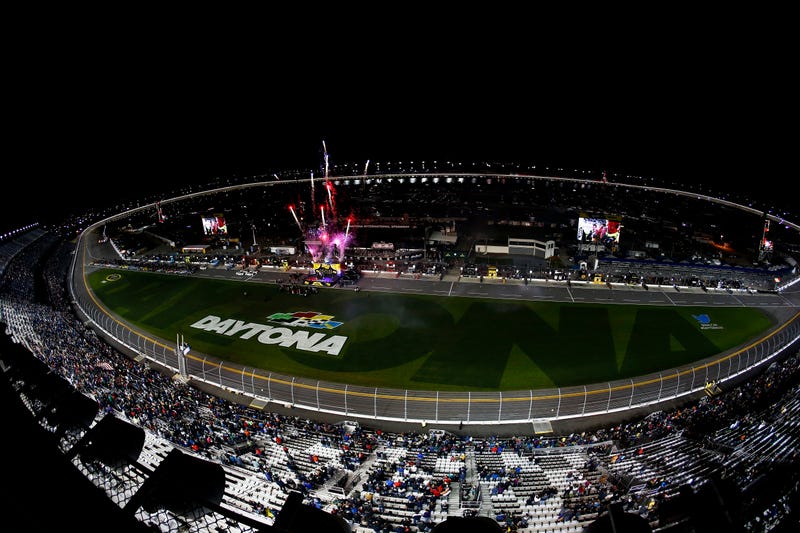
The Daytona 500 is upon us, and it’s far from just another day that you should brush off as a “redneck Christmas.” It’s among the NASCAR Sprint Cup Series’ biggest events, and arguably one of its best, which means that missing the race shouldn’t be an option. Here’s everything you need to know about it.
This time last year, the Sprint Cup Series was in a weird state. The driver who would become champion, Kyle Busch, was in the hospital following a wreck in the Xfinity Series race the day prior to the Daytona 500; his brother Kurt Busch was out due to legal troubles; Brian Vickers spent the day at home due to heart surgery; and NASCAR tried out a wreck fest of a group-qualifying format, which they later pulled from plate tracks in order to return to single-car runs.
The state of affairs heading into this Daytona 500 are a little less weird, though a name synonymous with the sport, Jeff Gordon, will be in the broadcast booth instead of on the track while Tony Stewart will miss the race after fracturing his back on an ATV. Strangely enough, Vickers will replace him.
Advertisement
Rookie and son of NASCAR Hall of Fame driver Bill Elliott, Chase Elliott, took pole position ahead of Toyota driver Matt Kenseth in qualifying last Sunday. Since NASCAR devotes a whole week to this race, the two 150-mile Can-Am Duel races on Thursday decided the rest of the starting lineup listed below.
http://blackflag.jalopnik.com/chase-elliott-…
Sponsored
For those who are new to NASCAR, there are a lot of components to the race—and the 2016 season as a whole—that we’ll break down below. We’ll go from the most broad-ranging topics to the most detailed ones, so that you’re able to stop at your level of interest in the race.
The 2016 Daytona 500: What It Is, Where To Watch It
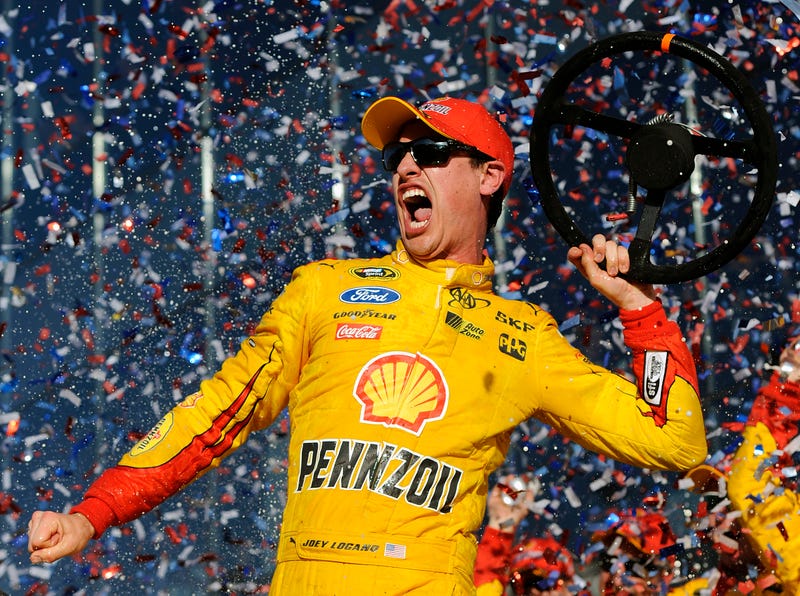
Sunday’s Daytona 500 takes place at Daytona International Speedway, a 2.5-mile track in Daytona Beach, Florida that produces speeds so high that holding a race there warrants a restrictor plate to slow the cars down a bit.
This race officially opens the NASCAR Sprint Cup Series season, and drivers will spend 500 miles (200 laps) fighting for the what is widely considered the biggest crown of the year. The high amounts of aerodynamics that factor in at Daytona have a leveling effect on the competition, allowing some of the less likely contenders—the ones with lower funding—a chance to contend for the win as well.
If you tune into the broadcast and wonder what the commentators mean when they refer to the “Big One,” they’re talking about giant wreck(s) like these that are characteristic of plate racing. For those who “only watch NASCAR when they wreck,” this race is the one for you.
Advertisement
Ways To Follow:
- Green flag: approximately 1:31 p.m. ET
- Television: FOX, Fox Sports Go at 1 p.m. ET
- Radio: Motor Racing Network and Sirius XM NASCAR Channel 90
- Timing and scoring
Starting lineup:
- Chase Elliott | No. 24 | Hendrick Motorsports | Chevrolet SS
- *Matt Kenseth | No. 20 | Joe Gibbs Racing | Toyota Camry
- Dale Earnhardt Jr. | No. 88 | Hendrick Motorsports | Chevrolet SS
- Kyle Busch | No. 18 | Joe Gibbs Racing | Toyota Camry
- Joey Logano | No. 22 | Penske Racing | Ford Fusion
- Jamie McMurray | No. 1 | Chip Ganassi Racing | Chevrolet SS
- Ryan Blaney | No. 21 | Wood Brothers Racing | Ford Fusion
- Kurt Busch | No. 41 | Stewart-Haas Racing | Chevrolet SS
- Kevin Harvick | No. 4 | Stewart-Haas Racing | Chevrolet SS
- Carl Edwards | No. 19 | Joe Gibbs Racing | Toyota Camry
- Denny Hamlin | No. 11 | Joe Gibbs Racing | Toyota Camry
- Ty Dillion | No 95 | Circle Sport-Leavine Family Racing | Chevrolet SS
- Kasey Kahne | No. 5 | Hendrick Motorsports | Chevrolet SS
- Kyle Larson | No. 42 | Chip Ganassi Racing | Chevrolet SS
- Greg Biffle | No. 16 | Roush Fenway Racing | Ford Fusion
- Danica Patrick | No. 10 | Stewart-Haas Racing | Chevrolet SS
- Chris Buescher | No. 34 | Front Row Motorsports | Ford Fusion
- Brian Vickers | No. 14 | Stewart-Haas Racing | Chevrolet SS
- Ricky Stenhouse Jr. | No. 17 | Roush Fenway Racing | Ford Fusion
- Matt Dibenedetto | No. 93 | BK Racing | Toyota Camry
- Austin Dillion | No. 3 | Richard Childress Racing | Chevrolet SS
- Michael Annett | No. 46 | HScott Motorsports | Chevrolet SS
- Trevor Bayne | No. 6 | Roush Fenway Racing | Ford Fusion
- Landon Cassill | No. 38 | Front Row Motorsports | Ford Fusion
- Brad Keselowski | No. 2 | Penske Racing | Ford Fusion
- Jimmie Johnson | No. 48 | Hendrick Motorsports | Chevrolet SS
- Regan Smith | No. 7 | Tommy Baldwin Racing | Chevrolet SS
- Martin Truex Jr. | No. 78 | Furniture Row Racing | Toyota Camry
- David Ragan | No. 23 | BK Racing | Toyota Camry
- AJ Allmendinger | No. 47 | JTG Daugherty Racing | Chevrolet SS
- Clint Bowyer | No. 15 | HScott Motorsports | Chevrolet SS
- Casey Mears | No. 13 | Germain Racing | Chevrolet SS
- Bobby Labonte | No. 32 | Go Green Racing | Ford Fusion
- Aric Almirola | No. 43 | Richard Petty Motorsports | Ford Fusion
- Brian Scott | No. 44 | Richard Petty Motorsports | Ford Fusion
- Michael Waltrip | No. 83 | BK Racing | Toyota Camry
- Paul Menard | No. 27 | Richard Childress Racing | Chevrolet SS
- Ryan Newman | No. 31 | Richard Childress Racing | Chevrolet SS
- Michael McDowell | No. 59 | Circle Sport-Leavine Family Racing | Chevrolet
- Robert Richardson Jr. | No. 26 | BK Racing | Toyota Camry
*Will have to drop to the back due to going to a back-up car after a wreck in his Can-Am Duel race on Thursday.
Drivers To Keep An Eye On In The Daytona 500
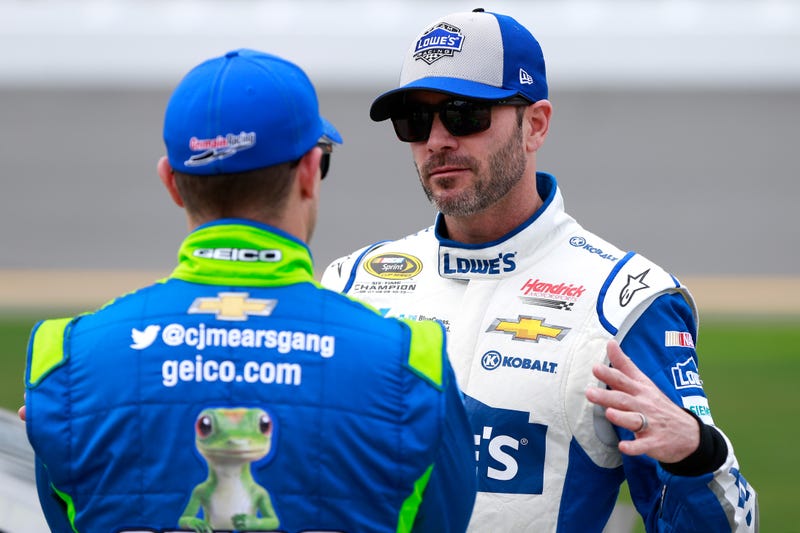
In the end, restrictor-plate racing in its entirety is a crapshoot. Without the tandem drafting we used to see at both Daytona and Talladega Superspeedway, the cars tend to either form a giant, two- and three-wide pack or a single-file line. The former is when most of the carnage happens.
Tandem drafting resulted in a lot of work within teams and manufacturers to strategically place cars at the front of the field, but NASCAR made a few changes to the cars a few years back to phase that out. In order to bring back “the pack,” NASCAR made tandems difficult aerodynamically for the cars. With or without tandems, there are still a few drivers who stand out.
Dale Earnhardt Jr. and Jimmie Johnson: The days of the Dale Earnhardt Jr. and Jimmie Johnson tandem draft are over, but that doesn’t mean these guys aren’t good on plate tracks. Both logged times within the top six in pole qualifying on Sunday, and the drivers have two wins each in the event. Earnhardt won his Can-Am Duel on Thursday with a dominating performance while Johnson wrecked, so look for the No. 48 car to make up ground on Sunday.
Casey Mears: While Casey Mears and the No. 13 team aren’t top contenders like the Hendrick Motorsports cars each week, Mears has a thing for plate racing. Mears finished fourth in last year’s Sprint Unlimited and fifth this year, and finished sixth—just behind Johnson—in the Daytona 500 last year.
Danica Patrick: While she’s not very good at just about any other track, Patrick found a niche in plate racing. Patrick became the first woman to win the pole and lead a lap in the Daytona 500 back in 2013, finishing eighth in the event. The other three years that she’s competed in the event, Patrick managed to be involved in some sort of in-race wreck. Regardless, Daytona is one of her best tracks and she will be one to keep an eye on.
Matt Kenseth: In the same club as Earnhardt and Johnson, Matt Kenseth also has two Daytona 500 wins. Kenseth is consistent at most of the tracks he races at, and he solidified his spot on the outside pole for the event in qualifying last Sunday. Kenseth’s most recent win in the event came in 2012, and according to Sporting News, this is his first time to qualify on the front row for the event. Kenseth had a strong run going in his Duel race on Thursday night, but a last-lap wreck will send him to the back of the pack for the start of Sunday’s race.
It’s important to note, again, that plate tracks are impossible to predict. Any one of these guys could be out of contention on the first lap or on lap 199—it all just depends on how the race goes. To be safe, watch everyone. That’s the best plan.
But the rest of the season is slightly more normal, so let’s move on to that.
NASCAR Format Changes, A Quick Refresher On The Chase
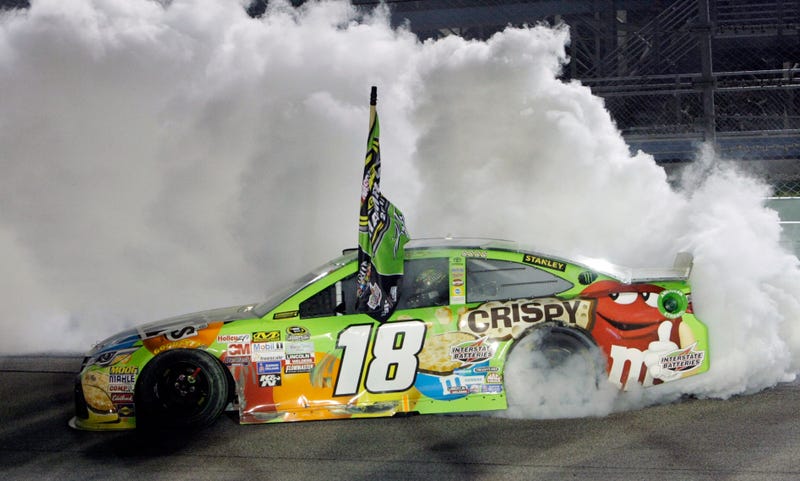
Most notably and most controversially, the NASCAR Sprint Cup Series will now feature a 40-car field rather than one with 43 cars. In that field, 36 entries will have a guaranteed starting spot in each race due to the Charter system (we’ll discuss that in depth later) and the final four spots will be open to qualifiers.
The field reduction means a shift in the number of points awarded, meaning that the race winner will receive 40 points plus any bonus accumulated during the race and the 40th-place car will receive one point plus any bonus. For those unfamiliar with bonus points in NASCAR, the winner receives three for the race win and one for leading a lap. Each lap leader gets a bonus point, and the driver who leads the most laps gets an extra point.
A breakdown of the points system via NASCAR—which has not been updated for the new field size, with this explanation in particular—can be found here.
As for deciding the championship title, NASCAR rearranged its Chase for the Sprint Cup format in 2014 to feature a knockout system. The NASCAR regular season consists of 26 races, while the final 10 compose the Chase.
A total of 16 drivers qualify for the first round of the Chase, with a regular-season win virtually guaranteeing a driver a chase spot so long as he or she meets criteria for a full-time competitor—attempting to qualify for every race and being in the top 30 in points—or has a medical waiver.
Defending champion Kyle Busch received a medical waiver in 2015 following his Xfinity Series accident that caused him to miss 11 races, allowing him to qualify for the Chase so long as he won a race and was within the top 30 in the points at the end of the regular season. With four wins almost immediately upon his return, Busch made the Chase and won the championship.
http://blackflag.jalopnik.com/kyle-busch-bou…
Back to the Chase itself. For those who don’t understand how the system works, here is the basic outline: in the Sprint Cup Series, the 16 drivers who originally qualify for the playoff format get a points reset at the end of the regular season. After three Chase races, four drivers get axed. Winning a race allows a driver an automatic pass to the next round, and points positions fill the rest of the spots.
The cycle repeats for three more rounds, until we’re left with four drivers and one race: the Homestead-Miami Speedway season finale. Out of the four drivers still in points contention, the highest finisher in the final race wins the title.
After two seasons with that format in its highest series, NASCAR implemented it into its two lower national series beginning this season—that, and a few other changes, for better and for worse.
http://blackflag.jalopnik.com/nascar-just-ma…
Neither the Xfinity Series nor the Camping World Truck Series used a playoff format for the championship like the Sprint Cup drivers did—points spanned the entire season, with no resets—and both formats are a bit different.
The Chase in NASCAR’s Xfinity Series: Just like the Sprint Cup Series, the first 26 Xfinity Series races will be the “regular season.” Since the Xfinity Series has a shorter season than Sprint Cup, the final seven races races will be the Chase.
All of the qualification rules—attempting to qualify for every race, being in the top 30 in points—apply, and the rules for advancing within the Chase are the same as the Sprint Cup Series. A win is an automatic next-round berth, and the top drivers in points will go along as well.
Where the Xfinity Series Chase differs is in how many drivers will qualify for the Chase. With less rounds, only 12 drivers will make the cut. Just like in the Sprint Cup version, four drivers get the axe after each found of three races, and we wind up with four final contenders at Homestead-Miami Speedway. Highest finisher takes home the title.
One addition to the Xfinity Series season unrelated to the Chase should be fun to watch, and that is the format for the series’ Dash 4 Cash events. Those four races will feature two heat races and a main event, similar to the way some short-track racers do it (and that’s a good way).
The Chase in NASCAR’s Camping World Truck Series: The NCWTS will get in on the Chase action for 2016 as well, with its championship field decided during the first 16 regular-season races. Just as the Xfinity Series, the criteria used in the Sprint Cup Series will determine which drivers qualify for the Chase.
Only eight drivers will qualify in the NCWTS, though. Those drivers will have a seven-race Chase just as the Xfinity Series does, and two drivers will be knocked out of contention every three races. A race win guarantees a berth in the next round, and the series will end up with four drivers to compete for the title in the final race at Homestead-Miami Speedway.
The rather strange addition to the NCWTS for the 2016 season is a caution clock, which will have a 20-minute countdown. If the race goes a whole 20 minutes without someone wrecking or the officials finding debris on the track, a forced caution will wave and the clock will be reset. If a caution occurs before the clock hits zero, the clock will reset then as well.
Within the final laps, the caution clock will turn off. At every track other than Pocono Raceway and Canadian Tire Motorsports Park—where it will go off with 10 laps remaining—the clock will turn off with 20 laps to go. There will be no caution clock at Eldora Speedway (hallelujah), because that’s real dirt racing and we don’t need to de-purify it with these rules from stick-and-ball sports.
http://blackflag.jalopnik.com/these-rules-fr…
The caution clock is like a college-basketball halftime, and that in itself is quite a frightening thought. Speaking of stick-and-ball sports…
The Overtime Line (Yes, There Is Now An “Overtime”)
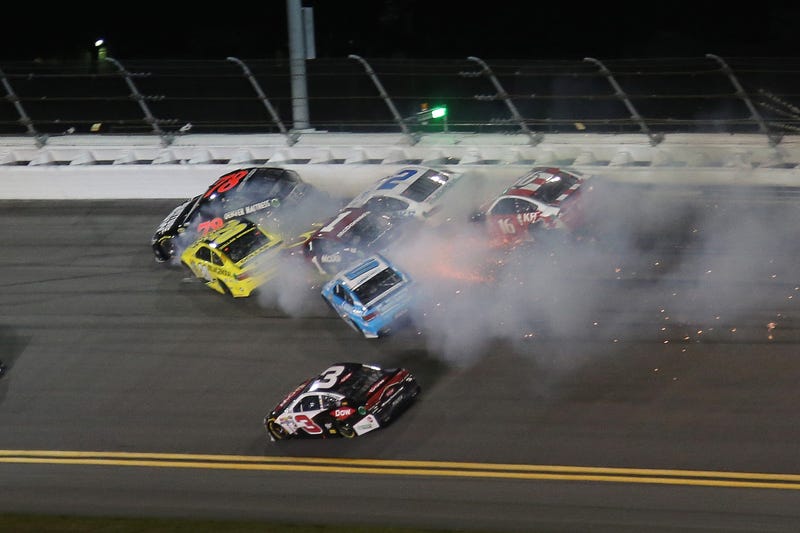
Prior to the first official events at Daytona, NASCAR hit the traditional race fans with a new procedure for running extra laps in the case of a late-race caution—an “overtime” for all three top divisions of NASCAR. (Sound kind of like a stick-and-ball sport to you? Yeah, that was probably the goal. Sigh.)
NASCAR tweaked and rebranded its green-white-checkered finish, which occurs when a race goes beyond its planned distance. Both formats consist of a green-flag lap and a white-flag lap prior to the checkered flag, and drivers got three attempts at a clean run under the old format. Under the old system, the leader had to take the white flag in order for a finish to be considered clean. The next flag—whether that be a caution, red flag or the checkered—ended the race.
With the new system, each track will now have a permanent overtime line in the same sense as each track has a start-finish line. In the case of the race running over the allotted distance, the overtime line will act as the white flag used to—once the leader reaches it, the next flag ends the race.
The rule comes with unlimited attempts rather than a specified amount, and the overtime line will be placed differently at each track. At Daytona, for example, the line is on the backstretch.
Courtesy of the Sprint Unlimited exhibition race last Saturday night, we got to see how the overtime line played out before the regular season began. It wasn’t much different from the former green-white-checkered finish—other than the gimmicky name—and the race still ended under caution with a last-lap wreck.
If a caution flies after the leader passes the overtime line as it did last weekend, the field will freeze cars will be scored as they cross the line under caution.
In essence, the new overtime rule is the same as the old rule with the addition of unlimited attempts. By defining a line on track, it takes out the ambiguity of relying on the when the flagman flew the white flag if need be. And as unnatural as it may feel in racing, perhaps the fans of stick-and-ball sports who tune into races—especially the Daytona 500—will fancy the rebranded “overtime.”
The Charter System
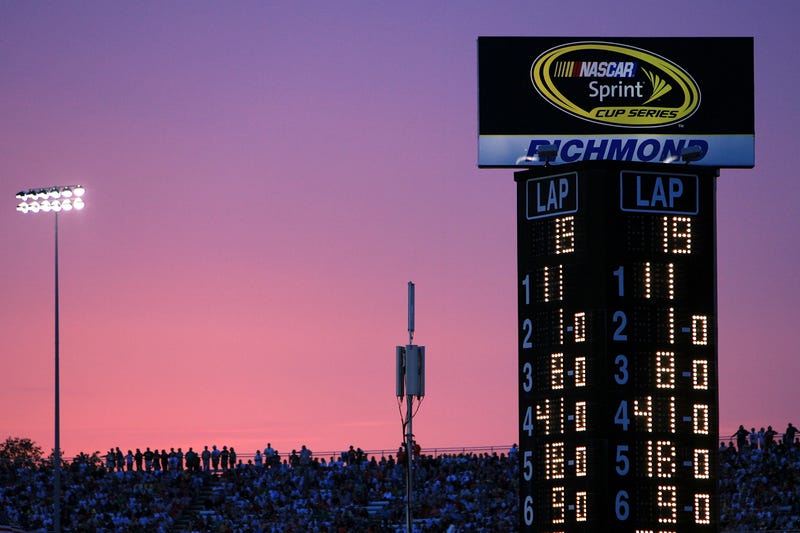
Finally, NASCAR introduced a charter system for the 2016. This won’t so much affect NASCAR or the on-track product from a fan standpoint, but it’s a new way to run the business and requires a nine-year agreement from teams.
As mentioned earlier, there are 36 Charter teams in the Sprint Cup Series that will be locked into every race. NASCAR designated these teams due to their showing of “long-term commitment,” defined by which teams attempted to qualify each week for the past three years.
The criteria means that the No. 21 Wood Brothers Racing car—an icon of the sport—will not have a Charter. Both the No. 19 Joe Gibbs Racing and the No. 41 Stewart-Haas Racing cars purchased a Charter from Michael Waltrip Racing, which ceased its full-time operation at the end of the 2015 season.
Since there are 40 spots in the field, four remaining spots will go to “Open” teams that do not have Charters, and those spots will be based on qualifying. If weather cancels qualifying, combined practice speeds will decide which cars receive the four remaining spots. If practice and qualifying go to the dumps for some reason, owner points will decide.
Per NASCAR, Charter owners can transfer a Charter to another team for a full season once during the first five years of the agreement. Teams may also sell the Charters if they’d like, and NASCAR can take away a Charter if a team winds up in the bottom three of the owner-points standings for three years in a row.
Perhaps one of the most interesting parts of the Charter system is that teams now have a hard cap on how many cars can be run. In the past, teams could field four full-time cars and a part-time rookie car for a select few races. In 2015, Hendrick Motosports did this with rookie Chase Elliott before he took over Jeff Gordon’s No. 24 car.
With a cap at four, teams can no longer field an extra car if four are already in the field. This new guideline will affect the bigger, four-car teams like Joe Gibbs Racing, Hendrick Motorsports and Stewart-Haas Racing, of which JGR and Hendrick are known to funnel up rookies through lower series.
The Charter system took away not only the option for a rookie car, but it took something away from the fans as well. Under the new system, NASCAR will no longer publicly disclose purse money for its events—something that has been an aspect of the sport for decades. For reference, even the very first Daytona 500 in 1961 released full purse information.
But hey—with tax season coming around, maybe we don’t want to know how much these guys win after all. A list of teams with Charters can be found here.
Enjoy the race, and hopefully this guide will help you figure out everything that goes on during it. You’re a bad American if you don’t watch it.
Photo credit: Jeff Zelevansky/Getty Images, Jared C. Tilton/Stringer/Getty Images, Matt Sullivan/Stringer/Getty Images, AP Photo/Darryl Graham, Jerry Markland/Stringer/Getty Images (bottom two)
Contact the author at alanis.king@jalopnik.com.

